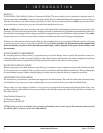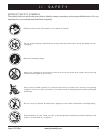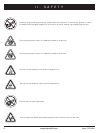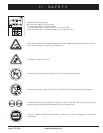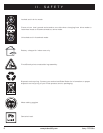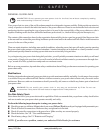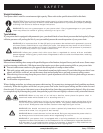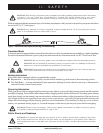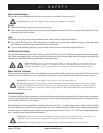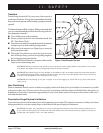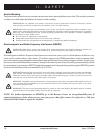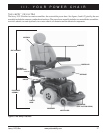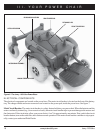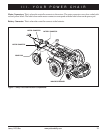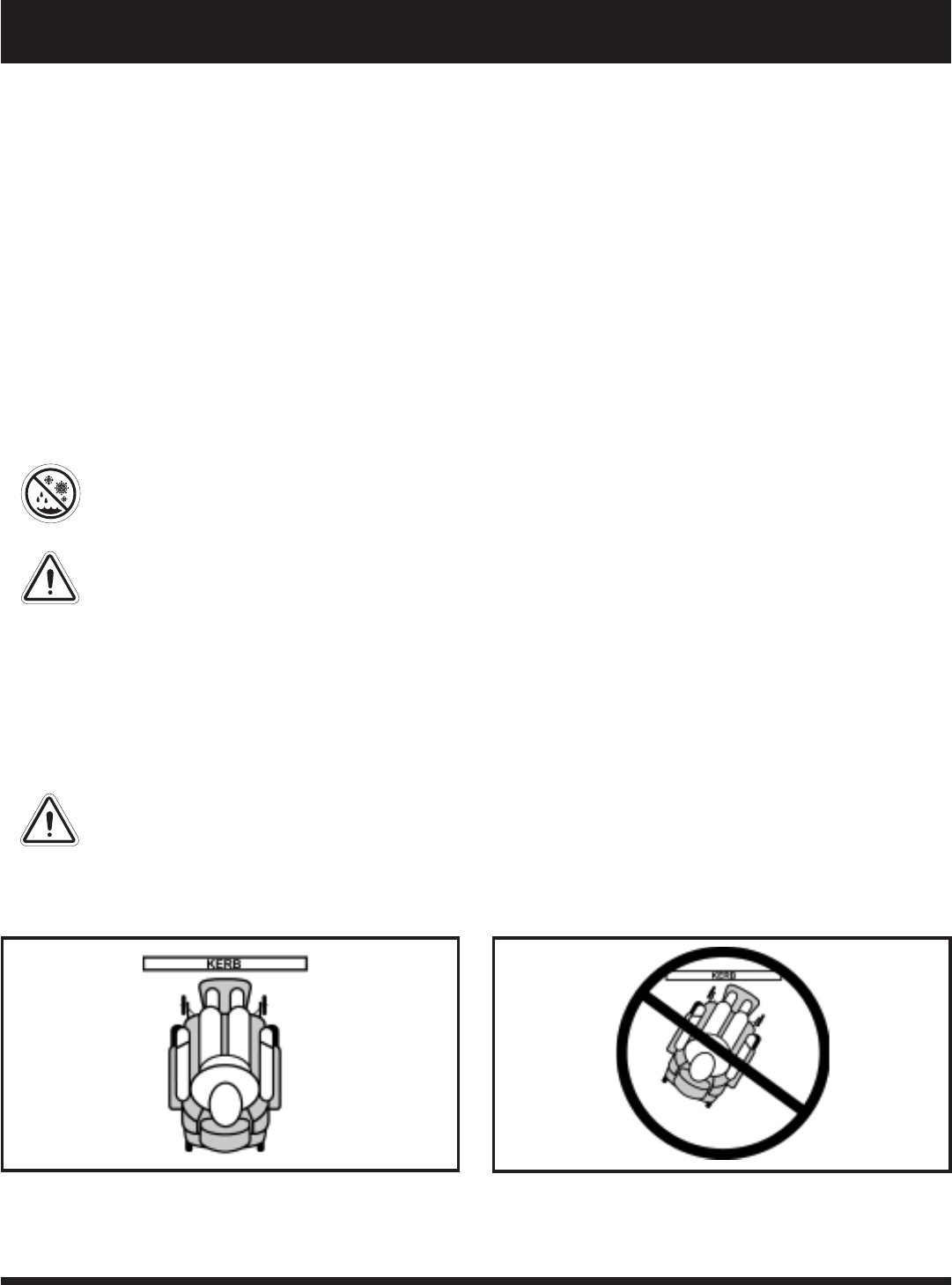
12 www.pridemobility.com Jazzy 1103 Ultra
II. SAFETY
Outdoor Driving Surfaces
Your power chair is designed to provide optimum stability under normal driving conditions—dry, level surfaces composed
of concrete, blacktop or tarmac. However, Pride recognises that there will be times when you will encounter other surface
types. For this reason, your power chair is designed to perform admirably on packed soil, grass and gravel. Feel free to use
your power chair safely on lawns and in park areas.
! Reduce your power chair’s speed when driving on uneven terrain and/or soft surfaces.
! Avoid tall grass that can entangle the running gear.
! Avoid loosely packed gravel and sand.
! If you feel unsure about a driving surface, avoid that surface.
Inclement Weather Precautions
Exposure of your power chair to inclement weather conditions should be avoided whenever possible. If suddenly caught
up in rain, snow, severe cold or heat while operating your power chair, proceed to shelter at the earliest opportunity.
Thoroughly dry your power chair before storing, charging or operating your power chair.
PROHIBITED! Operating in rain, snow, salt, mist/spray conditions and on icy/slippery surfaces can
have an adverse affect on the electrical system. Maintain and store your power chair in a dry and
clean condition.
WARNING! Prolonged exposure to hot or cold conditions may affect the temperature of upholstered
and non-upholstered items on the power chair, possibly resulting in skin irritation. Exercise caution
when using the power chair in extremely hot or cold conditions or when exposing your power
chair to direct sunlight for prolonged periods of time.
Stationary Obstacles (Steps, Kerbs, etc.)
Proceed with extreme caution when driving near raised surfaces, unprotected ledges and/or drop-offs (kerbs, porches,
stairs, etc.). Be sure your power chair is traveling perpendicular to any kerb you may be required to navigate. See figure 2.
WARNING! Do not attempt to have your power chair climb or descend an obstacle that is higher
than 5 cm (2 in.) unless you have the assistance of an attendant.
WARNING! If your power chair is equipped with a kerb climber, do not attempt to climb any kerb
in excess of 5 cm (2 in.) in height. Do not approach kerbs at an angle; instead approach any kerb
you intend to ascend or descend in the forward position.
WARNING! Do not attempt to have your power chair proceed rearward down any step, kerb or
other obstacle. This may cause the power chair to tip.
Figure 2. Correct Kerb Approach
Figure 3. Incorrect Kerb Approach



